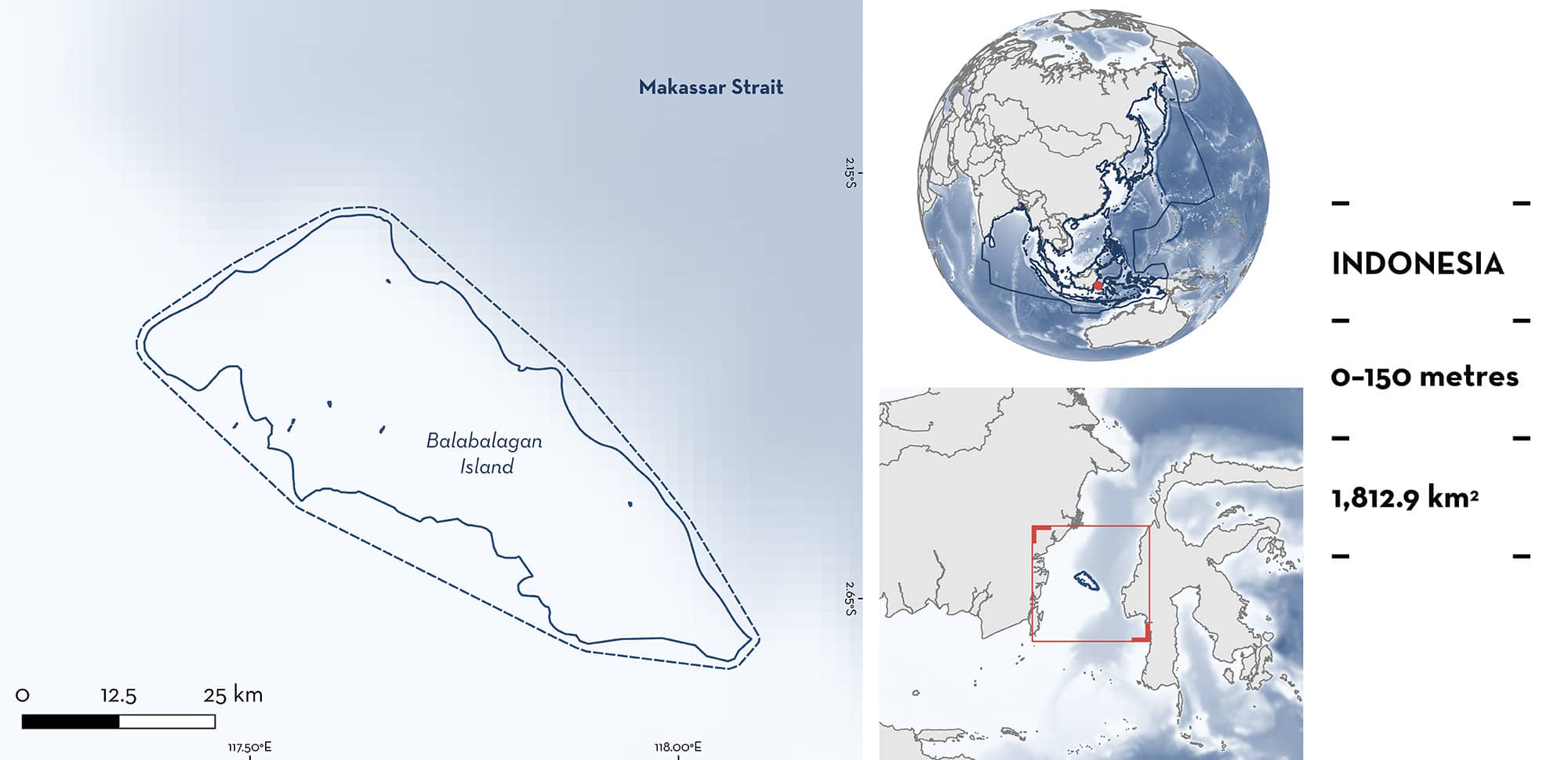ISRA FACTSHEETS
ISRA FACTSHEETS
ASIA REGION
Balabalagan Island
Summary
Balabalagan Island is located in the Makassar Strait, central Indonesia. The area includes the eastern border of the shelf and is characterised by the presence of coral reefs and shallow channels around them. Seasonal upwellings increase the productivity in the area. Within this area there are: threatened species and reproductive areas (Silky Shark Carcharhinus falciformis).
Download factsheet
Balabalagan Island
DESCRIPTION OF HABITAT
Balabalagan Island is located in central Indonesia. It sits in the Makassar Strait, between Kalimantan and Sulawesi, and is part of the West Sulawesi province. The area includes the eastern border of the Kalimantan shelf and is characterised by the presence of coral reefs and shallow channels around them.
The Indonesian Throughflow carries North Pacific waters into the area producing strong currents (Gordon et al. 2019). This throughflow along with the southeast monsoon produces seasonal upwellings, especially in August and September, that increase the productivity of the area (Utama et al. 2017). Sea surface temperatures range in average between 24–30°C.
This Important Shark and Ray Area is pelagic and is delineated from inshore and surface waters (0 m) to 150 m based on the bathymetry of the area.
CRITERION A
VULNERABILITY
One Qualifying Species within the area is considered threatened with extinction according to the IUCN Red List of Threatened Species. The Silky Shark is assessed as Vulnerable (Rigby et al. 2021).
CRITERION C
SUB-CRITERION C1 – REPRODUCTIVE AREAS
Balabalagan Island is an important reproductive area for one shark species.
Between 2016–2019, pregnant female and neonate/young-of-the-year (YOY) Silky Sharks were recorded in opportunistic landing surveys from fisheries operating in the area at depths of 7–150 m (Indonesia Ministry of Marine Affairs and Fisheries [IMMAF] unpubl. data 2020). Between October and November 2016, 24 individuals between 75–80 cm total length (TL) were observed caught in the area. Known size-at-birth for the species is ~56–87 cm TL (Ebert et al. 2021) confirming that these individuals were neonates/YOY. In 2017, 13 pregnant females (216–225 cm TL) and 176 neonates/YOY (76–80 cm TL) were recorded in April, September, and November (IMMAF unpubl. data 2020). In 2018, four pregnant females and 42 neonates/YOY (53–60 cm TL) were recorded. In 2019, four pregnant individuals and 36 neonates (43–64 cm TL) were recorded in the area, and in 2023, 89 individuals measuring between 40–280 cm TL were recorded, confirming the regular presence of these life stages and confirming that this is a pupping area for the species.
Download factsheet
SUBMIT A REQUEST
ISRA SPATIAL LAYER REQUEST
To make a request to download the ISRA Layer in either a GIS compatible Shapefile (.shp) or Google Earth compatible Keyhole Markup Language Zipped file (.kmz) please complete the following form. We will review your request and send the download details to you. We will endeavor to send you the requested files as soon as we can. However, please note that this is not an automated process, and before requests are responded to, they undergo internal review and authorization. As such, requests normally take 5–10 working days to process.
Should you have questions about the data or process, please do not hesitate to contact us.


